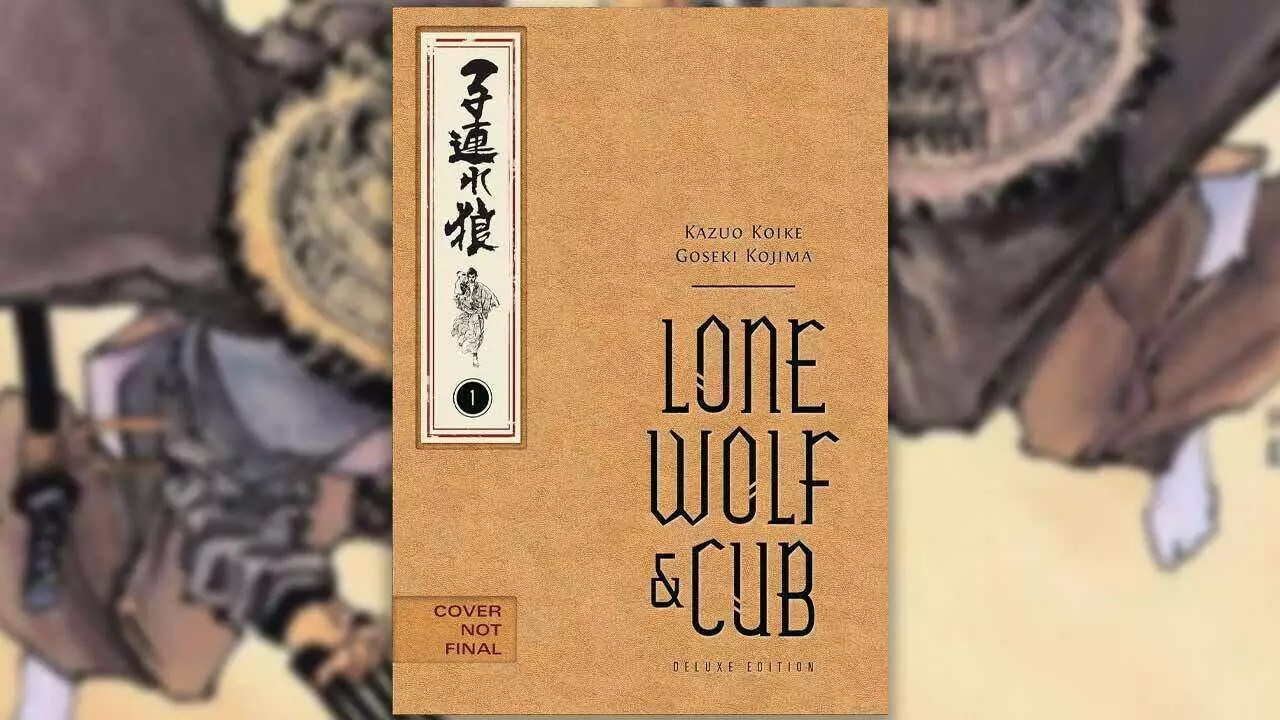“Lone Wolf and Cub” stands as a monumental achievement in the world of manga, transcending mere comic storytelling to become a cultural phenomenon. Created by Kazuo Koike and illustrated by Goseki Kojima, this series explores the tumultuous era of feudal Japan through a raw lens that combines visceral violence with profound emotional complexity. Its innovative narrative structure and meticulous artwork elevate it far beyond conventional manga, positioning it firmly as a cornerstone of literary and artistic excellence. Unlike many series that rely heavily on superhero tropes or predictable plots, Koike and Kojima craft a meticulous tale rooted in history, honor, and the unbreakable bond between father and son. This groundbreaking approach has not only captivated readers but also influenced countless creators—prompting a reevaluation of what manga can achieve artistically and thematically.
The New Deluxe Editions: A Celebratory Rebirth for a Classic
The release of Dark Horse’s Deluxe Editions marks a significant milestone in preserving and celebrating this legendary series. These hardcover collections, notably larger at 7″ x 10″, offer fans an immersive experience that honors Kojima’s detailed artistry. Every line, shadow, and expression is amplified through the oversized format, inviting readers to appreciate the fine craftsmanship that often gets lost in smaller editions. The tactile elements—grain-textured covers, foil-stamped lettering, and built-in ribbons—serve as a testament to the care taken in design, transforming the reading experience into a tangible celebration of craftsmanship. The fact that these editions are printed in the original right-to-left manga format shows respect for the authenticity and cultural roots of the story, emphasizing its importance within the Japanese manga canon. For collectors and newcomers alike, these editions are more than mere books—they are artifacts that honor an enduring legacy.
Impact and Influence: A Father’s Vengeance, a Genre’s Birth
Few manga series have matched the cultural influence of “Lone Wolf and Cub,” which set the stage for a genre where a powerful man shields innocence amid chaos. The story’s core—Ogami Itto’s relentless pursuit of justice and his tender guardianship of his son—resonates deeply with audiences because it bridges extreme violence with poignant themes of fatherly love. Its narrative has inspired not only countless manga but also an array of films, television series, and even contemporary narratives that focus on the archetype of a lone protector navigating treacherous worlds. The influence extends beyond entertainment, shaping perceptions of masculinity, parental responsibility, and justice. The series’ brutal depiction of violence serves a purpose—highlighting the cost of vengeance and the resilience of hope amid despair. This duality has cemented its place as a seminal work that challenges and inspires creators and audiences alike.
Beyond Manga: Cinematic and Cultural Significance
The adaptation of “Lone Wolf and Cub” into six highly acclaimed films during the early 1970s underscores its cinematic versatility. These movies, now available through the Criterion Collection with restored visuals and audio, demonstrate how the series’ themes translate powerfully onto the big screen. The films’ gritty, stylized action sequences combined with themes of filial devotion and moral ambiguity create an experience that is as impactful today as it was decades ago. The preservation efforts by Criterion serve to elevate these works as essential artifacts of global cinema, asserting the cultural importance of the original manga. It’s rare for a manga to inspire such a lasting cinematic legacy, and it underscores the series’ broad influence extending into different artistic mediums.
Critiquing the Legacy: A Mixed Legacy of Brutality and Beauty
While “Lone Wolf and Cub” is undeniably a masterpiece, it warrants a critical perspective that recognizes the series’ brutal realism and graphic depictions of violence. Its unflinching portrayal of bloodshed and moral ambiguity might alienate some readers who prefer softer or more escapist narratives. Moreover, the series’ relentless tone and dark themes could overshadow its moments of tenderness and hope, risking a perception that the story is only about suffering and revenge. Despite these criticisms, it’s precisely that unvarnished honesty—a willingness to confront uncomfortable truths—that elevates the story and distinguishes it from more commercialized fare. Its influence on genre-building is undeniable, but its raw intensity calls for a mature audience capable of grappling with complex moral questions.
Overall, “Lone Wolf and Cub” can be appreciated not merely as entertainment but as a profound cultural artifact—one that continues to challenge, inspire, and resonate across generations.


Leave a Reply